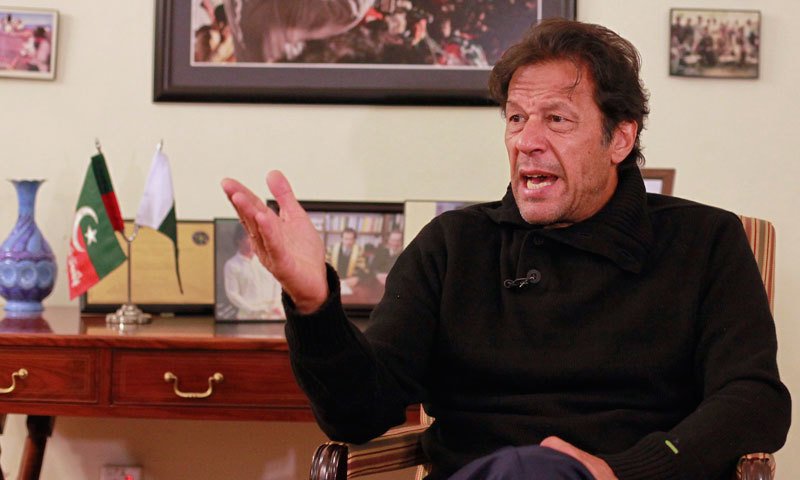
That was then. Six months later it appears things have gone off script.
As Imran Khan stood on the Charing Cross stage earlier this week and stared at a sea of empty chairs, he must have thought how long six months can be. On July 28th, 2017 no one could have imagined that only six months later the combined ‘might’ of Khan’s PTI, Zardari’s PPP and Tahirul Qadri’s PAT would be unable to pull off a successful jalsa in the heart of Lahore. This was not how the situation was supposed to unfold; this was not how fates were expected to unfurl.
Something somewhere had gone horribly wrong.
The N party did not rupture. The Sharif family did not split. The Nawaz-Maryam trial did not produce a smoking gun. The Panama verdict did not stand the test of time too well. The Panama issue did not retain its damaging efficacy. The by-elections in Punjab did not vote in PTI candidates. Nawaz did not escape into exile. The Shahid Khaqan government did not fall on its sword. The Hudaibiya case did not come to fruition. Shehbaz Sharif did not fall victim to either Hudaibiya or the Baqir Najfi report. The technocratic government did not proceed beyond being a bad idea. And the container revolution threatened by the maverick from Canada never materialised — finally fizzling out with a whimper that January evening on Charing Cross.
Something somewhere had gone horribly wrong.
And while this something was proceeding to go wrong, some rather unexpected things began to transpire. Khan, Khanistas and the roving (and depleting) hordes of Qadri were so busy heaping scorn on the Sharifs, they failed to notice that the narrative aggressively being peddled by Nawaz and Maryam had slowly began to find traction. ‘Panama and Iqama’ were repeated so many times in so many places with so many variations that they began to elicit nods. The defiance of Nawaz — considered foolish and dangerous by most — began to pay dividends. Here was a new narrative being weaved around a leader who said he had been wronged by the system and he would fight back. It was a narrative that painted Nawaz as the underdog even as his party occupied the corridors of power at the Centre and Punjab. And it was a narrative that played the victim card (“mujhe kyon nikala — why did you oust me”) while branding Imran Khan as the ‘ladla’ (darling) of the powers that be. In essence, this well-thought out narrative aimed at persuading the PML-N base voter that Nawaz was wronged by a system that ganged up against him and Imran Khan willingly sat in their lap to do their bidding.
This fight back had a ripple effect across the political landscape. First it kept the party intact because the fence sitters calculated that while Nawaz’s battery was low, he still carried a battery pack with him. Second, it kept the family intact despite murmurs of discontent from the Shehbaz camp. If the ‘good cop, bad cop’ routine was indeed choreographed by the two brothers, it managed to keep the brittleness of the narrative from reaching a breaking point. Third, it allowed Maryam to take the war into the enemy camp with a heavy fusillade of speeches and tweets which betrayed no sign of compromise, concession or accommodation. Hers was a no-holds-barred assault on anyone and everyone who was considered responsible for her father’s ouster. This relentless verbal shelling started to push the opposing camp into a defensive mode.
The first signs were occasional remarks by judges followed by the famous ‘Baba Rehmat’ speech by the chief justice. Then gradually the opposition parties started pushing back against the Nawaz and Maryam narrative. Pushing back? When did Nawaz’s ‘fight back’ turn into the Opposition’s ‘push back’? A gradual shift had taken place with the hunted becoming the hunter. Nawaz had a narrative. His opponents had a verdict. It was a political mismatch.
Yes it was a mismatch because Nawaz owned the narrative that was simple and tailor-made for political slanging. His opponents had the verdict but the verdict was legal and it was weak. And the more Imran peddled the verdict, the more he substantiated the Nawaz narrative that he was a ‘ladla’. The more Imran tried to occupy the high moral ground, the more he struggled after the disqualification of Jehangir Tareen for not being a ‘Sadiq and Ameen’.
Meanwhile Nawaz was here, there and everywhere. He spoke at massive jalsas, he spoke after each court appearance and he spoke at the Punjab House. His every word was recorded, whatsapped and telecast across TV and mobile screens. At every place he said the same thing again and again and again. Drip, drip, drip went the message into the hearts and minds of his voters: he was still here, he was still fighting, he was still in command.
But the Opposition threatened mass agitation. They whispered that the situation was fertile for the overthrow of the government and the democratic coup in Balochistan was evidence enough that Nawaz could bleed. The threat was potent. The fiasco at Lahore’s Charing Cross put an end to it. The hunters were now being hunted.
It will be six months this week from the day that Nawaz was ousted and left for dead. Six long months later he is drawing crowds and the Opposition is not. Six months later Nawaz is ratcheting up his narrative and readying for the elections while Khan is still relying on his old rants. Six months later the situation is not what it was expected to be.
Imran Khan should be worried.
Published in The Express Tribune, January 21st, 2018.
Like Opinion & Editorial on Facebook, follow @ETOpEd on Twitter to receive all updates on all our daily pieces.












COMMENTS (5)
Comments are moderated and generally will be posted if they are on-topic and not abusive.
For more information, please see our Comments FAQ